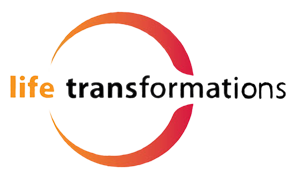Glute Training
Do you like your rear view? As we approach competition season and bikini season, every gal wants to focus on her back side. Ladies tend to hold onto body fat the longest in the glute, hip and thigh areas. While body fat reduction comes primarily from nutrition and cardiovascular activity; lifting and shaping the glute region can help with the appearance of the rear view.
If you have a weak backside, you may want to allow a day for just glute strength training. Here are some good glute building moves to incorporate into your workout routine.
Squats- We have all heard “Squat for that booty.” Yes, squats build muscle to the glutes, but they are not the only exercise out there. Free bar, Smith machine, Pivot Squats, dumbbell squats and even body weight squats can train the glutes if done properly. If you stand up from your computer and do a bodyweight squat focusing on pushing through your heels on the way up, you will feel your glute muscles activating and being worked. This is the feeling you need when doing any variation of squats, pushing through the glutes. Now, squats are also great for all over thigh development; but, if the focus is glutes…push with the glutes.
Abductor- The abductor or outer thigh machine is great for training the hips and glutes. Depending on the angle of the machine at your gym, you may need to lean forward to a 45 degree angle to really push the movement back into the glute area.
Glute Bridge- You may want to do this movement in the corner of your gym to feel more comfortable. Lying on the ground with your feet on the floor directly under your knees, lift your hips up, then slowly lower to the ground. If you squeeze through your glutes you should feel this. To add resistance hold a dumbbell or weight plate on your pelvis as you lift your hips.
Leg Lifts- The best place to start leg lifts is on a bench. Lie face down with your hips off the bench (move a little forward if too much pressure is on your back) and your legs resting on the ground. Grip your hands on the front of the bench to balance yourself. Lift your legs so you do a “superman move” by pulling with your glute muscles, and then come down slow and repeat without letting your legs touch the ground. If this gets easy, try adding weight by adding ankle weights on your legs or a resistance band around your ankles. Want to change the angle, try this move on the incline bench for a deeper stretch. Another option is to put a BOSU ball on the bench so your bellybutton it on the center of the rounded BOSU.
Leg Press- The leg press or single leg press is another exercise that is great for overall thigh development. For your glute focused workout, but your feet at the top of the foot pad. This will allow you to push through your glute and hamstring muscles.
Plié Squats- Similar to the squat, but with a wide stance with toes pointing out. Try a squat. Then hold a weight plate or dumbbell to add resistance. If you are flexible, try standing with each of your feet on a weight bench (still in a wide stance). The added height will allow you to get a deeper squat and really push through your glute and inner thigh muscles.
If you want to try some non-weighted glute exercises, there is always the Step Mill, incline treadmill walk, bench jumps, broad jumps, frog jumps, high skips, and box jumps. Just remember to engage your glute muscles and use a slow and smooth movement to get the most out of what you are doing.
Each weighted exercise can always be modified by adding resistance or changing the angle. If you get bored with what you are doing, change it up. Glute exercise are great for improving your appearance in your skinny jeans, bikini or competition stage look. These are just some of the many glute exercises. Try some out and see what works for you.
Molly Wichman
IFBB Fitness Pro
Life Transformations Fitness Owner/Personal Trainer
This information is intended for general informational purposes and should not be considered medical advice or imply that any personal action should be taken. You should first discuss any physical, lifestyle and dietary changes with your health or medical professional.
